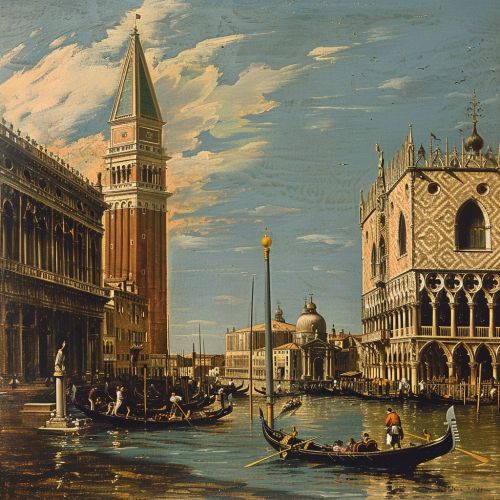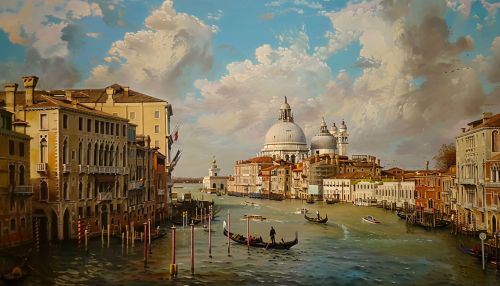Canaletto
Early Life
Giovanni Antonio Canal, better known as Canaletto, was born in Venice, Italy, in 1697. His father, Bernardo Canal, was a well-known scene painter, who introduced Canaletto to the world of art and painting. Canaletto initially followed in his father's footsteps, painting theatrical scenery. However, he soon developed a passion for landscape painting, particularly the depiction of cityscapes, or "vedute".
Artistic Career
Canaletto's early works were influenced by the Roman painter Giovanni Paolo Panini, who was known for his architectural and vedute paintings. Canaletto's unique style, however, soon began to emerge. He was particularly noted for his ability to capture the architectural details of Venice's buildings and the city's unique light.


In 1720, Canaletto began to paint the daily life of Venice, capturing the city's grandeur and the vibrancy of its inhabitants. His paintings of the city's famous landmarks, such as the Rialto Bridge and the Piazza San Marco, are considered some of his finest works.
Canaletto's reputation grew, and he began to receive commissions from foreign patrons, particularly from England. His works were highly sought after by English collectors, who appreciated his detailed and accurate depictions of Venice's architecture and city life.
In 1746, Canaletto moved to England, where he continued to paint cityscapes, this time of London. His English works, however, did not achieve the same level of success as his Venetian paintings. Critics often noted a certain stiffness in these works, a departure from the fluidity and vibrancy of his earlier paintings.
Canaletto returned to Venice in 1755, where he continued to paint until his death in 1768. His later works, while still displaying his signature attention to detail, are characterized by a certain melancholy, perhaps reflecting the artist's advancing age and the changing times.
Legacy
Canaletto's influence on the genre of vedute painting cannot be overstated. His detailed and accurate depictions of cityscapes set a new standard for the genre, influencing a generation of painters. His works are held in high regard and can be found in major museums around the world, including the National Gallery, London, and the Metropolitan Museum of Art, New York.
Style and Technique
Canaletto's style is characterized by his meticulous attention to detail and his ability to capture the unique light and atmosphere of Venice. He often used the camera obscura, a device that projects an image of its surroundings onto a screen, to achieve his detailed and accurate depictions.
Canaletto's technique involved applying thin layers of oil paint, allowing him to achieve a level of detail and precision that was unprecedented in the genre of vedute painting. His use of perspective and his ability to capture the play of light on water and buildings are particularly noteworthy.
